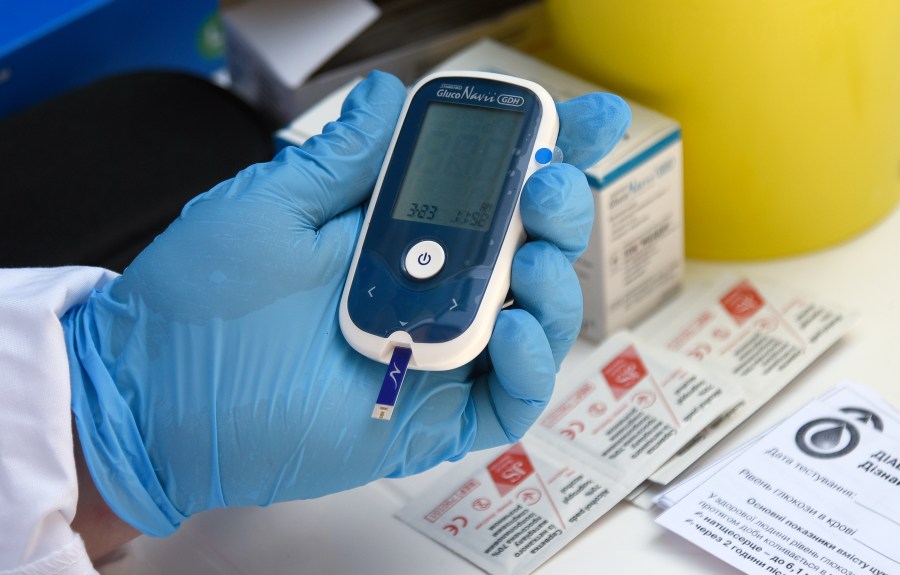HONOLULU (KHON2) — The Centers for Disease Control and Prevention released a new study that indicates Hawaiʻi has had a 15% decrease in Type II diabetes diagnoses.
According to the report, Hawaiʻi has the biggest decrease in diagnoses in the United States.
So, KHON2.com decided to sus out what physicians are seeing on the ground and whether this new report is offering a true glimpse into what is happening in Hawaiʻi.
Dr. Alan Parsa, an endocrinologist based in Hawaiʻi, holds multiple roles. He serves as an assistant clinical professor at the John A. Burns School of Medicine (JABSOM) at the University of Hawaiʻi, runs a private practice in Honolulu, leads the diabetes program at Queens West Oʻahu and provides endocrinology services at the Waiʻanae Comprehensive Health Center.
His diverse involvement offers a comprehensive view of endocrinology and diabetes care in the state.
When KHON2.com asked about his journey into endocrinology, Dr. Parsa humorously downplayed it as a series of gradual steps rather than a dramatic calling.
“I woke up one day and what the heck happened? I’m in endocrinology,” he quipped. Despite the unremarkable start, his passion for the field is evident in his extensive work and dedication to teaching.
At JABSOM, Dr. Parsa engages with first-year medical students, helping them bridge the gap between theoretical knowledge and practical application.
“In the beginning, it’s kind of a shock because now you’re taking something that’s written in print and translating it into an actual human being,” he explained.
This transition can be both challenging and liberating for students as they begin to understand the real-world implications of their studies.
He noted that students often develop a compassionate approach to patient care, seeking to educate and nurture those they treat. However, others may gravitate towards fields like surgery, where immediate results are more visible. Endocrinology, with its focus on hormone regulation, presents unique challenges.
“Hormones are never a very balanced thing; they go up and down and sideways,” Dr. Parsa said, highlighting the complexity of the field.
A significant part of Dr. Parsa’s work involves addressing diabetes, a major health concern in Hawaiʻi. He discussed a reported 15% decrease in diabetes diagnoses, a statistic that requires careful interpretation.
“While it may be partially true, there are also signs that it’s not,” he cautioned, pointing out changes in how the CDC monitors diabetes since 2019. This alteration in data collection methods could contribute to the perceived decline in diagnoses.
Despite this, Dr. Parsa remains hopeful, emphasizing the importance of education in combating diabetes. “Education starts spreading from person to person, it starts getting a little bit infectious,” he said, underscoring the ripple effect of increased awareness and knowledge. He stressed the need to focus on high-risk groups, such as Filipinos, Native Hawaiians and other Pacific Islanders, to effectively combat the disease.
In his clinical research, both with pharmaceutical companies and independently, Dr. Parsa aims to understand and mitigate diabetes. He praised initiatives like the Diabetes Prevention Program at Queens, which focuses on slowing, reversing and preventing diabetes through education and intervention.
Dr. Parsa also highlighted the importance of lifestyle changes in managing diabetes. He referenced historical dietary patterns, such as the traditional Hawaiian diet promoted by Dr. Shintani, which demonstrated health improvements among Native Hawaiians.
However, he acknowledged the challenges posed by modern dietary habits and the introduction of non-native foods like rice, which have contributed to weight gain and associated health issues.
Looking forward, Dr. Parsa called for more local research to tailor health interventions to Hawaiʻi’s unique population.
“Research really helps guide our future. If we aren’t doing enough research to really look to see what’s happening and to see what’s gonna work, then we don’t know whether it’s actually gonna work,” he emphasized.
Dr. Parsa’s insights underscore the multifaceted approach needed to tackle diabetes in Hawaiʻi. Through education, research, and community engagement, he and his colleagues aim to improve health outcomes and create a healthier future for the islands.
These are the typical symptoms of Type II Diabetes. They are fairly benign on their own; so, it’s important that you take stock with each one to determine your needs.
Urinating often.
Feeling very thirsty.
Feeling very hungry—even though you are eating.
Extreme fatigue.
Blurry vision.
Cuts/bruises that are slow to heal.
Tingling, pain, or numbness in the hands/feet.
You can click here for more information from the American Diabetes Association.
Being diagnosed is a very scary experience for anyone to go through. So, find a community of support to help you see that management will give you a much better quality of life.
